Is it Safe to Swim in the Ocean in Hawaii?
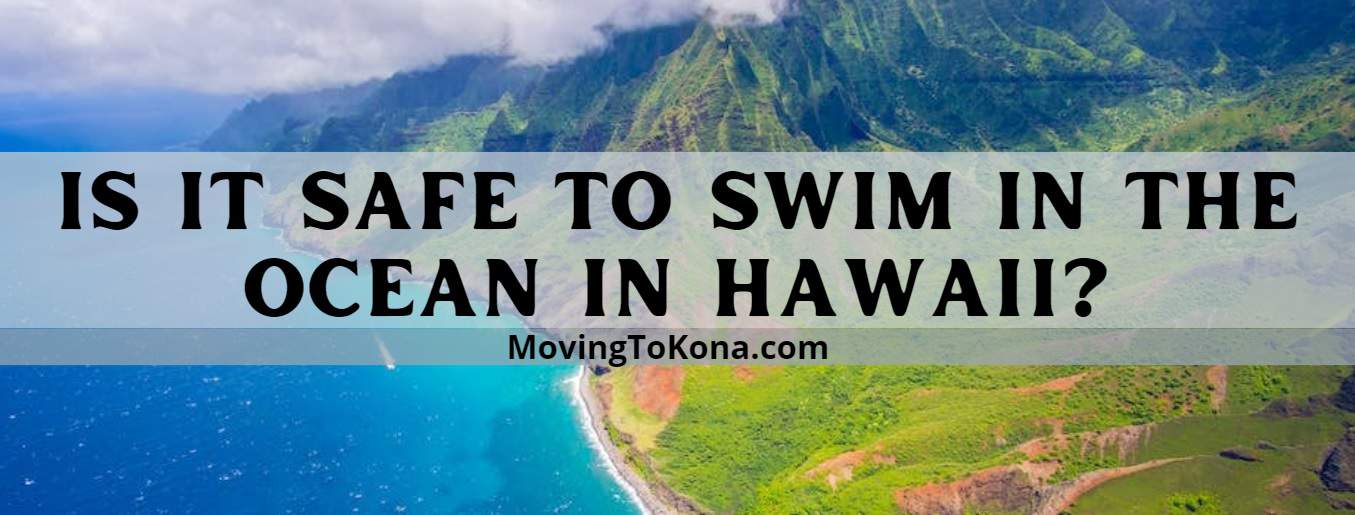
Why is it Important to Consider Safety When Swimming in Hawaii?
1. Hawaii’s coastlines are rocky and sometimes dangerous, which can cause injuries and accidents.
Hawaii’s 750 miles of coastline features some of the most beautiful, diverse, and dangerous coastlines in the world. From pounding shore breaks to dramatic lava rock cliffs, the shorelines of Hawaii are both thrilling and risky to traverse. Waikiki Beach provides a gentle respite, but hidden dangers lurk even in the shallowest of waters. In recent weeks, two incidents have occurred that highlight the importance of taking ocean safety seriously.
One notable incident occurred when a woman was charged by Rocky, a famous monk seal mother, while swimming off Kaimana Beach on the eastern edge of Waikiki. The incident is a reminder that Hawaii’s waters are home to many marine creatures, and one should always be mindful of their presence.
The next evening, two people were reported to have drowned off the coast of Ala Moana Beach Park, a popular beach park on Oahu’s south shore. This tragedy serves as a reminder that it is easy to get into trouble in any of Hawaii’s waters, regardless of how shallow or calm it may seem.
This increase in risky beachgoers has caused Honolulu Ocean Safety and Lifeguard Services to increase their presence on Oahu and to urge visitors to be vigilant. People are increasingly seeking out “off-the-beaten path” places to explore, such as Spitting Caves, a dangerous 70-foot-tall cliff jump where people have died.
It is important to be mindful of ocean safety when swimming in Hawaii’s waters. Lifeguards suggest that people should never turn their backs to the ocean, be aware of their limits in the water, pay attention to warning signs, never swim while impaired, watch children closely, and be aware of sharp coral and sea urchins. Hawaii’s coastlines can be dangerous, but if one takes the necessary precautions, one can enjoy the beauty of the islands’ waters safely.
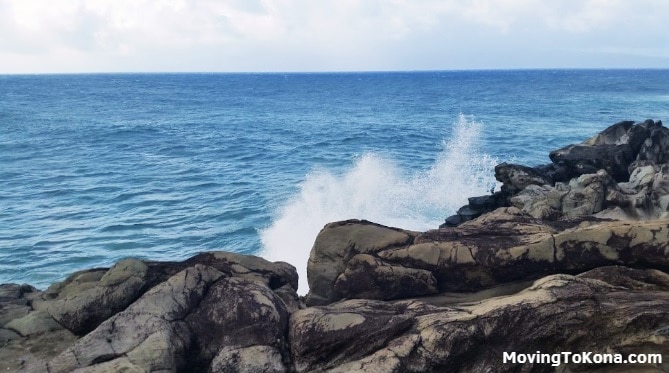
2. There are also many dangerous marine animals, such as sharks, jellyfish, and eels.
Hawaii’s waters are home to many types of dangerous marine animals, including jellyfish, Portuguese man-of-war, sharks, moray eels and sea urchins.
Jellyfish: These clear, tentacled creatures can cause an irritating sting and are most commonly found near shore. Box jellyfish, in particular, are predictable creatures and drift close to shore every month, 9-12 days after a full moon. If stung, a local remedy is to put meat tenderizer on the affected areas and rinse the skin with ocean water or freshwater.
Portuguese Man-of-War: Similar to jellyfish, these creatures can also cause a painful sting. Their translucent bodies may be tinted with pink, blue, or violet and they often times get flushed onto the sand by waves.
Sharks: These predators of the ocean can cause serious injury or death if they confuse humans with the regular items on their menu. It is rare that a swimmer, diver or surfer gets hurt or killed by a shark in Hawaii, but it is important to stay aware and follow some common sense rules when playing in the ocean.
Moray Eels: These creatures are usually harmless unless they feel threatened. They live in caves in the reefs and, if encountered, it is best to let them go their way and not to approach them. If bitten, it is important to resist the urge to forcefully jerk your hand back as this can be worse than the bite.
Sea Urchins: These spiny animals inhabit the reefs and can be extremely painful with the needles and poison inside them. It is important to watch your step when in the water and not to touch them.
3. Storms, floods, and tidal waves can also occur, which can cause injury or death.
Hawaii is a beautiful destination that is home to a wide variety of ocean conditions, and can be subject to storms, floods, and tidal waves. Storms in Hawaii can vary in intensity, ranging from tropical storms to hurricanes. (Click here to find out how to prepare for a hurricane in Hawaii.) All can cause flooding, strong winds, and dangerous surf conditions. Flooding in Hawaii can be caused by heavy rains over a short period of time, or by the surge of ocean water caused by a storm. Additionally, high waves can cause flooding due to the buildup of pressure from the waves. Lastly, tidal waves, or tsunamis, are caused by seismic disturbances in the earth’s crust and can be devastating. Tsunamis can occur at any time and cause a massive amount of destruction. In Hawaii, it is important to pay attention to current weather conditions, warnings, and evacuation plans in order to stay safe.
4. There are also risks of infection and disease when swimming in the ocean.
Swimming in the ocean in Hawaii can be a great experience, but there are a few risks associated with it. First, there are sharp rocks, coral, or sea creatures on the ocean floor that can cause injury if a person is not careful. Additionally, drugs and alcohol can impair a person’s judgment, balance, and coordination and make it unsafe to swim. Another risk is rogue waves that can unexpectedly knock a person into the ocean and cause injury. In addition, there are three beaches in particular that tourists should avoid because they are dangerous. It is also important to always swim with a companion and to know how to swim, to stay within your limits and remain calm if a situation arises. When snorkeling, be aware of changing conditions and always look out for large waves. Be aware of wet areas with slippery lava rocks and be cautious of posted warning signs. Finally, be aware of infections such as MRSA and leptospirosis, which can be caught from swimming in contaminated water. By being aware of these risks, you can enjoy the ocean with peace of mind.
5. There are no lifeguards on many beaches, so it is important to be careful.
Many beaches in Hawaii do not have lifeguards, and this can be a cause for concern. Without a lifeguard, swimmers, snorkelers and beach-goers may be unaware of potential dangers in the ocean, such as sharp rocks, coral, sea creatures, and strong currents. Even if a beach looks calm, unexpected waves and strong currents can quickly become dangerous, so it is important to know the conditions before entering the water. Swimmers should never venture out alone, and should pay attention to local warning signs. Additionally, it is recommended to stay close to shore and swim at beaches with lifeguards. With the help of a lifeguard, swimmers can ensure their safety and receive helpful tips on how to navigate the ocean.
6. There is also the risk of being attacked by a wild animal.
The risk of being attacked by a wild animal when swimming in Hawaii is low, as there is only a small number of shark attacks reported each year, and other marine life such as jellyfish, Portuguese man-of-war, moray eels, and sea urchins are more likely to cause a minor injury than a serious one. For example, jellyfish often drift close to shore and can cause an irritating sting, but this can be treated with meat tenderizer or urine. Moreover, sharks are normally confused by surfers on a board and mistake them for seals, which is why most attacks occur on surfers. Therefore, it is important to take some common sense precautions when swimming in Hawaii, such as swimming in groups, avoiding murky waters and staying close to a boat. Furthermore, pay attention to the signs posted in areas with heavy jellyfish invasion, and do not approach or touch any wild animal in the ocean. Overall, swimming in Hawaii is generally safe if the right precautions are taken.
7. There are also risks of being injured by sharp rocks or coral.
When swimming in Hawaii, there is a risk of being injured by sharp rocks or coral. This risk is especially present in shallow or murky water, or when diving headfirst into water you have never been in before. To avoid possible injury, it is important to check for depth and obstructions before going in, and stay aware of your surroundings when snorkeling. Additionally, certain species of jellyfish, Portuguese Man-of-War, and sharks can also cause injury when swimming in the ocean. Jellyfish can cause an irritating sting, and Portuguese Man-of-War have clear, tentacled bodies that can cause a painful sting. Sharks can pose a risk of attack if they confuse humans with their regular food items, so it is important to be aware and avoid swimming and diving close to a harbor or busy shipping route. Moray eels can also be dangerous if they feel threatened, so it is best to keep your distance and not to put your hands in openings in rocks and corals.
8. There is also the risk of being swept away by strong currents.
Swimming in the ocean can be a great experience, but it is important to be aware of the strong currents in Hawaii, as they can quickly become dangerous. Rip currents are powerful, narrow channels of fast-moving water that flow away from shore, and can move at speeds of up to eight feet per second. These currents often become more powerful when the surf is high and can be very narrow or hundreds of yards wide. It is important to be aware of these currents and the potential danger they pose, as they can quickly carry inner tubes, pool rafts, floaties and other inflatables away from shore. It is also important to be aware of the tides, as they can affect the strength of the currents. Knowing the tide patterns, such as if the tide is coming in or going out, can help you to better estimate the strength of the currents and make more informed decisions about when and how to safely swim. Additionally, paying attention to both the ocean conditions and other swimmers can help you to avoid being caught in a dangerous current or colliding with someone else in the water.
9. There is also the risk of being injured by volcanic activity.
When swimming in Hawaii, there is a risk of being injured by volcanic activity. The lava that flows from the Big Island’s Hawaii Volcanoes National Park can be extremely hot and the area is surrounded by hardened lava rock, which is sharp and dangerous. Further, when lava makes contact with the Pacific it produces hydrochloric acid, which can be inhaled and cause illness. Additionally, one should also be aware of sharp rocks, coral, or sea creatures on the ocean floor, as well as other swimmers, snorkelers, or boats to avoid potential collisions and injuries. Therefore, when visiting Hawaii, it is important to pay attention and be mindful of the potential risks of volcanic activity when swimming or engaging in any other water sport.
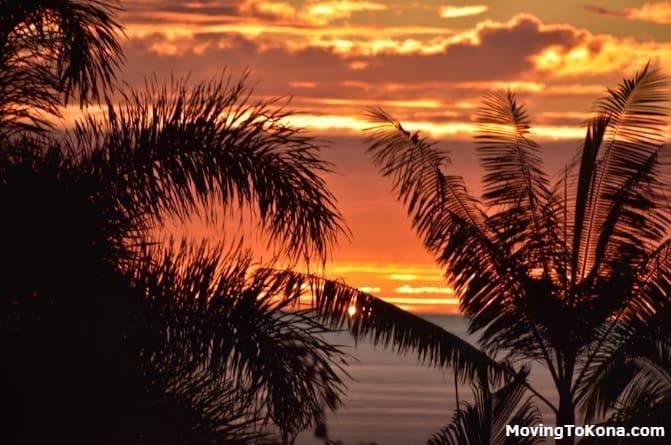
What are the Ocean Conditions in Hawaii?
1. Coral Reefs and Shoreline
In Hawaii, there is a diverse range of coral reefs and shorelines with a wide variety of conditions. The Hawaiian reefs possess some of the most abundant levels of marine species in the world, with over 700 species of fish, 400 species of algae, and over 2000 species of invertebrates. The coral reefs span over 1,200 miles in the center of the Pacific and comprise approximately 85% of the United States’ coral reef population. The coral range in color from lime green to flamboyant peach. There are also certain types of coral that may cause irritation or injury if brushed against, such as the venomous fire coral, or even be poisonous if punctured. Hawaiian waters also contain a variety of creatures, such as sea anemones, eels, some types of fish, and conus, a potentially lethal sea snail.
Snorkeling in Hawaii is a popular activity, with a range of snorkel spots all around the island and plenty of places to find both fish and coral formations. However, it is important to be aware of sharp rocks, coral, and sea creatures on the ocean floor that could cause injury, and to also be aware of other swimmers and vessels when snorkeling.
2. Waves
The ocean conditions for waves in Hawaii can vary greatly between beaches and depend on weather conditions. Generally, waves can range from gentle and shallow to powerful and dangerous. Waves arrive in groups, separated by lulls, and local weather reports often include a surf report with a forecast of wave heights. Rip currents can be powerful and narrow channels of fast-moving water flowing away from shore, and can move at speeds up to eight feet per second. Visitors should always stay alert and aware of their surroundings and pay attention to changes in weather and wave conditions. Additionally, visitors should never swim alone or turn their back to the ocean. It is also important to ask a lifeguard about the current ocean conditions before venturing into the ocean.
3. Surfers
The surf conditions in Hawaii vary greatly, depending on the location and the time of year. In general, summer is the safest season for surfing and the ocean tends to be calmer in the mornings. Waves arrive in groups, and can be unpredictable, making it important to observe the ocean before entering the water. Even gentle, shallow water can quickly become powerful and dangerous. Popular surf locations such as Maui’s Peahi (aka Jaws) and Oahu’s Banzai Pipeline are renowned for their large waves and can be hazardous for inexperienced surfers. High surf warnings are often issued for these locations and it is important to take caution and heed these warnings. When high surf is present, it is best to head to the leeward side of the island, or swim in an area that is observed by lifeguards. It is also important to be aware of rip currents and be careful of any inflatable tubes or rafts that may be carried away from the shore.
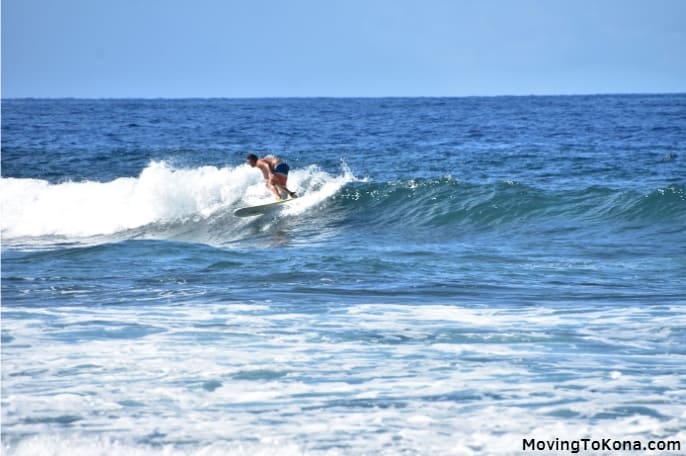
4. Lifeguards
The lifeguards in Hawaii have high standards of professional surf and open water lifesaving for maximizing public safety in the waters. Their goal is to provide public, professional and governmental education in the field of water safety, as well as teach, train, and disseminate techniques for the rescue of persons in distress, the emergency medical treatment of injured persons, and the prevention of aquatic emergencies. They also actively support the general improvement of lifesaving and humanitarian causes. Before going in the ocean, it is important to check with a lifeguard on current conditions and potential safety hazards, as well as to pay attention to public address announcements and other warnings. People should also look out for each other in an emergency and always have someone on shore watching them. It is also important to know one’s own limits and to be aware of the beach warning signs. By doing all of these things, people can stay safe and reduce the risk of injury or drowning while in the ocean in Hawaii.
5. Storms and Rain
The Hawaiian Islands are home to some of the world’s most stunning landscapes, but they also experience some of the most extreme weather conditions. From hurricanes and tsunamis to flash floods and rockfalls, Hawaii’s ocean can be unforgiving and hazardous. Hurricanes, while rare, can cause major damage, while flash floods from heavy rain can quickly bring dangerous surge of water in the blink of an eye. Tsunamis, caused by underwater earthquakes and landslides, can cause major destruction and endanger lives. People visiting the area should pay close attention to the weather and ocean conditions and be prepared to act quickly in case of an emergency.
6. Temperature of Water
The average sea water temperature in Hawaii varies by city and month, with the temperatures ranging from 75°F to 80°F in Honolulu (Oahu), Kauai (Garden Isle), Maui, island of Hawaii (Big Island), and Hana. The warmest water temperatures occur from June to August, with temperatures typically reaching 79°F to 80°F, making it ideal for swimming. In the winter months, the water temperature drops to around 76°F to 77°F, making it pleasant for swimming but not as warm as in summer. Though the average water temperature may seem to drop more drastically in other places, in Hawaii it usually never adjusts more than 6 degrees from summer to winter.
7. Undertow
Undertow is a strong and powerful current of water that is created when waves break on the shore. This current can quickly and easily drag swimmers away from the beach, making it a potentially dangerous water hazard. In Hawaii, strong undertows are caused by the powerful waves that typically arrive on its southern and western coasts. This can make swimming in the ocean in these areas particularly dangerous, as the currents can pull even strong swimmers away from the shore. It is important for everyone to take caution when swimming in these areas and be aware of their surroundings. Lifeguards should be present and swimmers should stay in shallow water as much as possible. Additionally, swimming in groups is advised so that if someone were to get caught in an undertow, the others in the group can help them out.
8. Sharks and Other Sea Creatures
Sharks are one of the main sea creatures found in the ocean around Hawaii. Common types of sharks found in the area include blacktip reef shark, whitetip reef shark, grey reef shark, scalloped hammerhead shark, and tiger shark. These sharks are usually harmless unless they feel threatened or confused. Other potentially dangerous creatures in the ocean around Hawaii include jellyfish, Portuguese Man-of-War, moray eels, and sea urchins. Jellyfish have clear, tentacle-like bodies and can cause an irritating sting. Portuguese Man-of-War are similar to jellyfish and also inflict a painful sting. Moray eels inhabit reef caves and can cause a painful bite if disturbed. Lastly, sea urchins have needles and poison inside them which can be extremely painful if they get under the skin.
9. Hazards on Land
In Hawaii, there are several potential hazards on land that visitors should be aware of. On the Big Island, visitors should exercise caution when visiting Hawaii Volcanos National Park due to the flowing lava, which can cause burns, as well as shards of hardened lava rock which can cause lacerations. Additionally, visitors should be aware of potential landslides and hurricanes, which could cause damage and injury. When hiking, it is important to stay on managed trails and not to hike alone, as doing so can present extreme dangers, such as steep cliffs, slippery terrain, and volatile weather. Lastly, visitors should be aware of hazardous shorelines, such as those with strong currents and dangerous shorebreak, which could result in serious injury.
10. Cliffs and Swim Areas
Ocean conditions in Hawaii vary from beach to beach. While some have calm waters, others may have strong currents or dangerous shorebreaks. It is important to pay attention to warning signs, as certain areas may be off-limits for swimming or snorkeling. Cliffs and swim areas near the ocean can also have hazardous conditions due to strong waves, slippery surfaces, and potential for injury from sharp rocks, coral, or sea creatures. Before swimming, visitors should check for posted beach warnings and observe the surf for changing ocean conditions. It is also important to use caution when walking on wet surfaces, swim with a friend at all times, and be aware of the tides and rip currents.
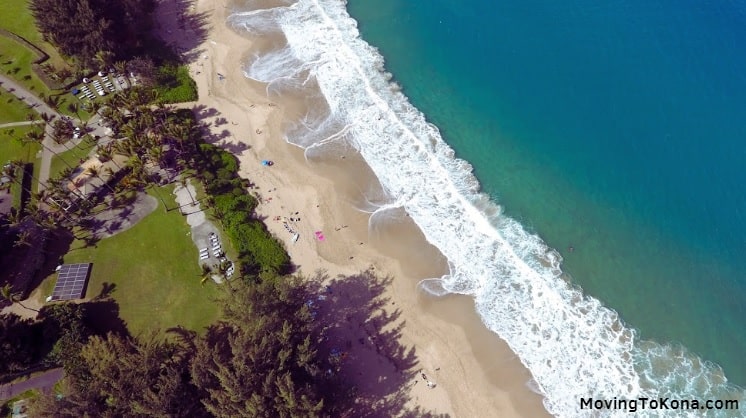
How Can You Stay Safe When Swimming in Hawaii?
1. Check the Beach Safety Rating
The beach safety rating can help to ensure safety when swimming in Hawaii by providing information about current beach and ocean conditions. Knowing about these conditions can allow swimmers to make informed decisions about which beaches to visit, as well as what precautions to take when in the ocean. For example, the beach safety rating could alert swimmers to the presence of dangerous shorebreak or strong currents at certain beaches. Additionally, it can provide information on lifeguarded beaches and any beach warning signs. By being aware of these conditions and following established safety guidelines, swimmers can reduce their risk of injury or drowning while enjoying the ocean in Hawaii.
2. Avoid the Dangerous Beaches
When swimming in Hawaii, there are certain beaches that should be avoided due to the potential danger they pose. Big Island’s Hapuna Beach is particularly dangerous due to the area’s lethal shore breaks. Other danger signs to look out for include warning flags indicating the presence of sharks. Other potentially dangerous beaches include Waikiki beach in Oahu, Penny’s Malasadas in Waikiki, and Big Island beaches with no lifeguards on duty.
To ensure safety while swimming in the ocean, visitors should pay attention to wave action and other changing conditions, never swim alone, and ask lifeguards for tips. Additionally, it is important to observe the surf before entering the water, be on the lookout for large waves, use caution when walking on wet surfaces, and know one’s limits when swimming.
3. Talk to the Lifeguards About the Safety Conditions of the Beach
Step 1: Locate a lifeguarded beach. You can visit sites such as HawaiiBeachSafety.com to find out which beaches have lifeguards on duty.
Step 2: When you get to the beach, locate a lifeguard and ask them about the current safety conditions. Make sure to pay attention to any public address announcements or warnings issued by the lifeguards.
Step 3: Ask the lifeguard about potential safety hazards, such as strong currents, dangerous shorebreak, or any other warnings they may have.
Step 4: Discuss the beach warning signs with the lifeguard, and make sure you understand them.
Step 5: Ask the lifeguard for any other tips they may have to help you stay safe while at the beach. This could include snorkeling safety tips, beach safety for families, or anything else they may have to offer.
Step 6: Make sure you and any companions have someone on shore observing you at all times. You should also tell someone who is not at the beach with you which beach you are at and when you will be back.
4. Check the Weather Conditions Before Going into the Water
It is important to check the weather conditions before going into the water in Hawaii because severe weather can cause dangerous ocean conditions. Strong winds can make it difficult to paddle back to shore, while high waves can cause powerful currents that can knock swimmers down or cause them to become disoriented. Knowing the local forecast can help you prepare for potential storms or high winds, and be aware of any changes in weather conditions. By using a weather app for the local surf report, you can get an advanced warning about wave heights and other potential hazards. Additionally, never enter the water without being familiar with the surroundings, including any sharp rocks, coral, or sea creatures that can cause injury. It’s also important to always swim with a friend, pay attention to wave action, and always return to shore before sunset. By observing these steps and being aware of the potential risks, you can ensure a safe and enjoyable time in Hawaii’s waters.
5. Wear the Proper Swimwear and Shoes
When swimming in Hawaii, it is important to wear the proper swimwear and shoes in order to stay safe and enjoy the experience. Appropriate swimwear can range from a swimsuit to a wetsuit, depending on the water temperature and the individual’s preference. Swimmers should also wear protective shoes that can provide traction and grip on wet surfaces and protect against things like sharp rocks, coral, and sea creatures. Additionally, it is important to wear a lifejacket if you are not a strong swimmer.
To ensure a safe and enjoyable swimming experience, here is a list of recommended swimwear and shoes for swimming in Hawaii:
Swimwear:
- Swimsuit
- Rashguard
- Wetsuit
- Swim Trunks
- Board Shorts
- Protective Swim Shirt
Shoes:
- Water shoes
- Neoprene booties
- Flip flops
- Beach sandals
Other Safety Gear:
- Life Jacket
- Swim Goggles
- Swim Cap
- Snorkel Mask
- Fins/ Flippers
By following these recommended tips and wearing the proper swimwear and shoes, swimmers in Hawaii can ensure a safe and enjoyable experience.
6. Keep an Eye on the Waves and Swells
For safe swimming in Hawaii, it is important to keep an eye on the waves and swells. Here is a step-by-step guide to staying safe in the ocean:
- Check the local weather report for surf forecasts and potential weather changes.
- Observe the ocean for several minutes before going in the water. Note if others are swimming or on surfboards.
- Avoid swimming before sunrise or after sunset when it is dark outside and visibility is poor.
- Check with a lifeguard about the current conditions and potential safety hazards.
- Use a free app to get the local weather and surf report.
- Swim with a friend and let someone on shore know which beach you are at and when you will be back.
- Be aware of wet rocks and ledges, as these areas can be slippery and hazardous.
- Pay attention to public address announcements and any other warnings issued by lifeguards.
- Know how to swim and your limits.
- Pay attention to wave action to avoid being knocked over or becoming disoriented.
- Pay attention to changes in weather conditions, and return to shore at the first sign of bad weather.
- Understand rip currents and be aware of the posted warning signs.
7. Stay Within Arms’ Reach of Land
Swimming in Hawaii can be a fun and exhilarating experience, however it is important to stay within arms’ reach of land while doing so. This is because the ocean can be unpredictable and dangerous, and by staying close to shore, you can exit the water more quickly if you become tired or uncomfortable. Additionally, staying close to the shore allows lifeguards to quickly come to your aid in case of an emergency. There are many potential hazards in the ocean, such as sharp rocks, coral, or sea creatures that could cause injury, or currents that could drag a swimmer out to sea. It is also important to pay attention to wave action to avoid being knocked over or becoming disoriented. To ensure a safe swimming experience in Hawaii, it is imperative to stay close to land at all times. Other safety tips include swimming with a friend, asking a lifeguard for safety and swimming tips, and paying attention to public address announcements and warnings issued by lifeguards. By following these guidelines, you can make the most of your time in the ocean and stay safe.
8. Avoid Certain Hazards, Such as Jellyfish, Sharks, and Rock Pools
When swimming in Hawaii, it is important to be aware of certain hazards that could cause injury. These can include sharp rocks, coral and sea creatures on the ocean floor, as well as other swimmers, snorkelers and beach vessels that could be avoided with proper awareness of one’s surroundings. Additionally, jellyfish and Portuguese Man-of-War, common to Hawaiian waters, can both cause a painful sting. Avoid swimming in areas where signs of jellyfish invasion are posted and watch your step if you come across the translucent bodies of a Man-of-War washed onto the sand. Sharks are also a potential risk in Hawaii, even though attacks on humans are rare. To minimize the chances of a shark attack, it is best to swim in groups, avoid the evening and early morning hours, stay clear of murky waters and shipping routes, and keep an eye on the movements of other marine animals. Moray Eels should be left alone and if bitten, one should wait for the eel to let go rather than forcefully pulling back one’s hand. Finally, sea urchins, which inhabit the reefs, should be avoided as their needles and poison can cause painful injury.
9. Bring a Bag with You for Your Things
It is important to bring a bag with you when swimming in Hawaii because it is vital to take the necessary safety precautions. These include carrying items that can help you in the event of an emergency, such as a whistle, a phone, and a floatation device. Furthermore, having swimwear and other maternity clothing for expecting mothers is essential for comfort and safety.
It is also important to be aware of the water conditions, such as the presence of ocean currents and winds, and to always have someone on shore watching you. Knowing how to use the equipment properly, such as floaties and pool rafts, is also necessary for safety. It is also important to ask for safety and swimming tips from lifeguards and to read and heed any posted warning signs. Knowing your limits and being aware of the tides is also essential for safe swimming.
Finally, bringing a bag with you will also ensure that you have all the necessary items to enjoy the many worthwhile activities that Hawaii has to offer, such as snorkeling and surfing. Having a bag will also ensure that you are able to take advantage of the stunning Hawaiian scenery and relax in the sun.
10. Remember That Nobody is a God
The importance of remembering that no one is a god when swimming in Hawaii cannot be understated. Whether you are a local or a tourist, taking precautions when swimming in Hawaii is essential. This is especially true due to the unpredictable currents and waves that can occur in the waters off the Hawaiian Islands. It is imperative to always have someone on shore keeping watch and to inform another person who is not at the beach about which beach you are at and when you will be back. Furthermore, understanding that the ancient Hawaiians did not have concepts of private property is crucial. In other words, recognizing that no one is a god when swimming off the Hawaiian Islands is a vital safety measure.
